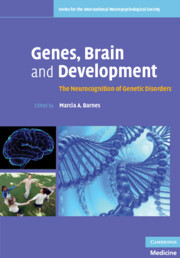Book contents
- Frontmatter
- Contents
- List of Contributors
- Preface
- Acknowledgments
- Section 1 Connecting genes, brain, and behavior in neurodevelopmental disorders
- Section 2 Genetic disorders and models of neurocognitive development
- 4 Language and communication in autism spectrum disorders
- 5 Language development in children with Williams syndrome: New insights from cross-linguistic research
- 6 Language in Down syndrome: A life-span perspective
- 7 Genetic disorders as models of mathematics learning disability: Fragile X and Turner syndromes
- 8 A developmental approach to genetic disorders
- 9 The use of strategies in embedded figures: Tasks by boys with and without organic mild mental retardation: A review and some experimental evidence
- Index
- References
8 - A developmental approach to genetic disorders
Published online by Cambridge University Press: 04 August 2010
- Frontmatter
- Contents
- List of Contributors
- Preface
- Acknowledgments
- Section 1 Connecting genes, brain, and behavior in neurodevelopmental disorders
- Section 2 Genetic disorders and models of neurocognitive development
- 4 Language and communication in autism spectrum disorders
- 5 Language development in children with Williams syndrome: New insights from cross-linguistic research
- 6 Language in Down syndrome: A life-span perspective
- 7 Genetic disorders as models of mathematics learning disability: Fragile X and Turner syndromes
- 8 A developmental approach to genetic disorders
- 9 The use of strategies in embedded figures: Tasks by boys with and without organic mild mental retardation: A review and some experimental evidence
- Index
- References
Summary
Introduction
In recent years, several researchers have attempted to apply the adult neuropsychological model to neurodevelopmental disorders. In the adult model, localized brain damage gives rise to a juxtaposed pattern of impaired and intact abilities. When applied to neurodevelopmental disorders, this approach fails to capture the role of development itself in the formation of the final phenotype. An alternative to this common strategy is a neuroconstructivist approach that considers the contribution of the infant start state, the entire developmental trajectory, and underlying cognitive processes to the phenotypic outcome. Results from studies of language and number in infants and toddlers with Williams syndrome and Down syndrome, along with a briefer discussion of face processing, will be presented in support of this position. The application of this approach to other developmental disorders such as autism will also be discussed.
The traditional adult neuropsychological approach to disorder is a static one, in contrast to a neuroconstructivist perspective, which emphasizes the importance of development and of studying early development and not just the endstate in older children and adults. A theoretically driven investigation of the cognitive processes underlying behavior as well as the use of converging measures to describe these processes are crucial aspects of understanding neurodevelopmental disorders from a neoconstructivist approach.
Three developmental disorders, i.e., Williams syndrome, Down syndrome, and autism, will be used to illustrate the developmental neoconstructive approach. The majority of studies to be discussed concern the first two groups.
- Type
- Chapter
- Information
- Genes, Brain and DevelopmentThe Neurocognition of Genetic Disorders, pp. 175 - 198Publisher: Cambridge University PressPrint publication year: 2010



